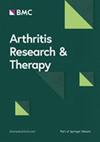Antiphospholipid antibodies as potential predictors of disease severity and poor prognosis in systemic lupus erythematosus-associated thrombocytopenia: results from a real-world CSTAR cohort study
IF 4.6
2区 医学
Q1 Medicine
引用次数: 0
Abstract
To investigate the role of antiphospholipid antibodies (aPLs) in the disease severity and prognosis of SLE-related thrombocytopenia (SLE-TP). This multicenter prospective study was conducted based on data from the CSTAR registry. TP was defined as a platelet count<100 × 109/L. Demographic characteristics, platelet count, clinical manifestations, disease activity, and autoantibody profiles were collected at baseline. Relapse was defined as the loss of remission. Bone marrow aspirate reports were also collected. A total of 350 SLE-TP patients with complete follow-up data, 194 (55.4%) were aPLs positive. At baseline, SLE-TP patients with aPLs had lower baseline platelet counts (61.0 × 109/L vs. 76.5 × 109/L, P<0.001), and a higher proportion of moderate to severe cases (24.2% vs. 14.1% ; 18.0% vs. 8.3%, P<0.001). SLE-TP patients with aPLs also had lower platelet counts at their lowest point (37.0 × 109/L vs. 51.0 × 109/L, P = 0.002). In addition, thean increasing number of aPLs types was associated with a decrease in the baseline and minimum values of platelets ( P<0.001, P = 0.001). During follow-up, SLE-TP carrying aPLs had a higher relapse rate (58.2% vs. 44.2%, P = 0.009) and a lower complete response (CR) rate. As the types of aPLs increased, the relapse rate increased, and the CR rate decreased. Furthermore, there was no significant difference in the ratio of granulocytes to red blood cells (G/E), the total number of megakaryocyte and categories. SLE-TP patients with positive aPLs had more severe disease a lower remission rate but a higher relapse rate.抗磷脂抗体是系统性红斑狼疮相关性血小板减少症疾病严重程度和不良预后的潜在预测因子:来自真实世界的 CSTAR 队列研究的结果
研究抗磷脂抗体(aPL)在系统性红斑狼疮相关血小板减少症(SLE-TP)的病情严重程度和预后中的作用。这项多中心前瞻性研究以 CSTAR 登记数据为基础。TP的定义是血小板计数<100 × 109/L。研究人员在基线时收集了患者的人口统计学特征、血小板计数、临床表现、疾病活动性和自身抗体谱。复发的定义是失去缓解。此外,还收集了骨髓穿刺报告。在 350 名有完整随访数据的系统性红斑狼疮-TP 患者中,194 人(55.4%)的 aPLs 呈阳性。基线时,有 aPLs 的系统性红斑狼疮-TP 患者的基线血小板计数较低(61.0 × 109/L vs. 76.5 × 109/L,P<0.001),中重度病例的比例较高(24.2% vs. 14.1%;18.0% vs. 8.3%,P<0.001)。患有 aPL 的系统性红斑狼疮-TP 患者的血小板计数在最低点时也较低(37.0 × 109/L vs. 51.0 × 109/L,P = 0.002)。此外,aPLs 类型的增加与血小板基线值和最低值的降低有关(P<0.001,P = 0.001)。随访期间,携带 aPLs 的 SLE-TP 复发率较高(58.2% 对 44.2%,P = 0.009),完全应答率(CR)较低。随着 aPLs 类型的增加,复发率上升,而 CR 率下降。此外,粒细胞与红细胞的比率(G/E)、巨核细胞总数和类别也无明显差异。aPL阳性的系统性红斑狼疮-TP患者病情更严重,缓解率更低,但复发率更高。
本文章由计算机程序翻译,如有差异,请以英文原文为准。
求助全文
约1分钟内获得全文
求助全文
来源期刊

Arthritis Research & Therapy
RHEUMATOLOGY-
CiteScore
8.60
自引率
2.00%
发文量
261
审稿时长
14 weeks
期刊介绍:
Established in 1999, Arthritis Research and Therapy is an international, open access, peer-reviewed journal, publishing original articles in the area of musculoskeletal research and therapy as well as, reviews, commentaries and reports. A major focus of the journal is on the immunologic processes leading to inflammation, damage and repair as they relate to autoimmune rheumatic and musculoskeletal conditions, and which inform the translation of this knowledge into advances in clinical care. Original basic, translational and clinical research is considered for publication along with results of early and late phase therapeutic trials, especially as they pertain to the underpinning science that informs clinical observations in interventional studies.
 求助内容:
求助内容: 应助结果提醒方式:
应助结果提醒方式:


